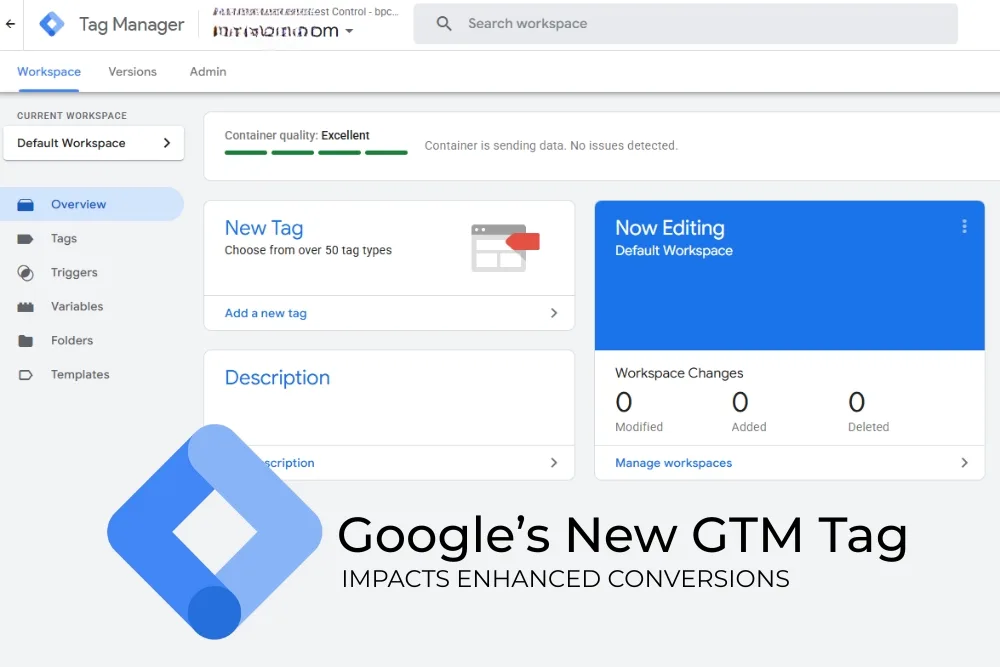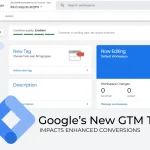Data accuracy and user privacy are often at risk in digital marketing. Google’s recent implementation of the Enhanced Conversions feature within Google Tag Manager (GTM) represents a significant step in helping digital marketers hit the right balance. Improving conversion tracking accuracy while respecting user privacy, this new feature promises to reshape campaign measurement and optimization.
This article underlines what Google’s Enhanced Conversions GTM Tag is, why it matters for digital marketers, how it works, and what you need to know to make the most of it.
What Are Enhanced Conversions?
At its core, Enhanced Conversions is an upgrade to the traditional conversion tracking framework used in Google Ads and Google Analytics. It uses first-party data (such as email addresses, phone numbers, or addresses) that users freely provide during conversions and encrypts this data locally before sending it securely to Google. This enables Google to better match conversions to ad interactions, even when cookies or identifiers like Device IDs are restricted or unavailable.
Why Enhanced Conversions?
Increasing privacy regulations (GDPR, CCPA) and browser changes that limit third-party cookies pose challenges to traditional conversion tracking faces challenges. Tracking pixels and cookies can fail to capture all conversions, causing advertisers to underestimate campaign performance and make suboptimal decisions.
Enhanced Conversions provide a privacy-safe way to improve conversion measurement by using hashed customer data that Google matches against signed-in users. This method increases the accuracy of conversion tracking, offering a clearer picture of how their campaigns perform.
The Role of Google Tag Manager (GTM) in Enhanced Conversions
Google Tag Manager is a widely used tag management system that allows marketers to add and update website tags without requiring developer resources. The introduction of an Enhanced Conversions Tag within GTM simplifies implementation by making it easier to configure and deploy enhanced conversion tracking directly from the GTM interface.
Instead of manually modifying website code or implementing complex server-side tracking, marketers can use this tag to collect and send hashed first-party data smoothly. This innovation means quicker adoption, fewer errors, and more reliable data capture.
How Does the Enhanced Conversions GTM Tag Work?
The process behind the Enhanced Conversions GTM Tag is relatively specific but powerful:
- User Data Collection: When a user completes a conversion (like a purchase, sign-up, or form submission), the website collects first-party identifiers such as email, phone number, or address.
- Local Hashing: The GTM tag hashes this data on the client side before transmission. Hashing is a cryptographic process that anonymises data, so the raw user information never leaves the user’s browser unencrypted.
- Secure Transmission to Google: The hashed data is sent securely to Google, which attempts to match it against signed-in Google accounts or other Google data sources.
- Conversion Matching: Google uses the hashed identifiers to link conversions with ad interactions more accurately, even when cookies are missing or blocked.
- Reporting and Optimization: The improved conversion data improves attribution accuracy, giving marketers better insights into campaign effectiveness and allowing for more precise bid optimization.
Marketing Benefits
1. Improved Conversion Tracking Accuracy
Enhanced Conversions help recover conversion data lost due to cookie restrictions or ad blockers. This means marketers gain a fuller view of how ads are driving actions, reducing “dark conversions” that traditional tracking misses.
2. Better Attribution and ROI Measurement
More accurate conversion data enables better attribution models, showing which campaigns, keywords, or audiences truly guide conversions. This allows for smarter budget allocation and maximises ROI.
3. Simplified Implementation with GTM
Using Google Tag Manager, the new tag reduces reliance on developers, lowers implementation errors, and speeds up deployment. This efficiency is critical in fast-moving digital environments.
4. Enhanced User Privacy Compliance
Since user data is hashed locally and transmitted securely, Enhanced Conversions align with privacy laws and industry standards, reducing compliance risks.
5. Future-Proofing Tracking Strategies
With browsers phasing out third-party cookies and growing user privacy controls, Enhanced Conversions provide a more robust, future-ready tracking method that adapts to the developing standards.
Challenges and Considerations
- Data Quality: The feature depends on accurate first-party data. Incorrect or incomplete customer information reduces matching effectiveness.
- Privacy Policy Updates: Ensure your privacy policy discloses the use of customer data for conversion tracking.
- Implementation Complexity: Although GTM simplifies the process, marketers still need technical familiarity to configure tags correctly.
- Not a Complete Replacement: Enhanced Conversions complement but do not fully replace other tracking methods like server-side tagging or broad analytics strategies.
What Does This Mean for the Future of Digital Marketing?
Google’s Enhanced Conversions via GTM is part of a broader industry change toward privacy-centric and data-driven marketing. As consumer privacy becomes a top priority, marketers must adapt to new tracking technologies that respect user consent while enabling effective measurement.
This transition encourages greater support for first-party data and more transparent data collection practices, ultimately promoting trust with customers. Those who adopt these innovations early will gain an advantage by accessing more accurate performance data and making better-informed decisions.
Google’s new Enhanced Conversions GTM Tag represents a significant advancement in the digital marketing field. Securely utilizing first-party data helps to address the growing challenges posed by privacy regulations and cookie restrictions, improving conversion tracking accuracy and campaign optimization.
If you haven’t researched Enhanced Conversions yet, now is the time to get familiar, plan your implementation, and harness the full potential of your marketing campaigns in the years to come.




